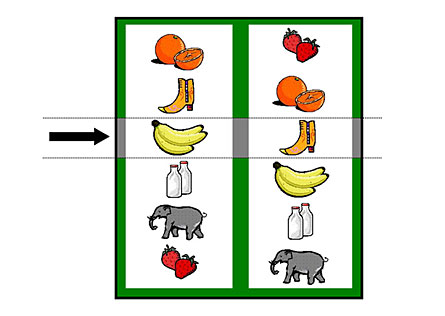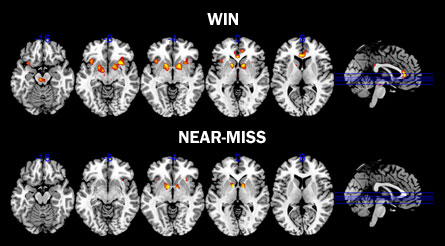- More than 2 years ago
Close only counts in horseshoes and hand grenades, some say. But to the gambling brain, almost hitting the slot machine jackpot may be just as good as actually winning, a study appearing in the Feb. 12 Neuron suggests. The results may help explain gambling’s allure.


“This is a very elegant study,” comments Marc Potenza, an addiction psychiatrist at Yale University. “From a public health and clinical perspective, this is very important.”
When all three cherries hit the payline and money pours out of a slot machine, select regions of the brain activate. Called the reward pathway, brain cells in these regions signal pleasure by releasing and detecting the feel-good chemical messenger dopamine. “Those same areas are recruited by natural rewards, like chocolate, and by drugs of abuse, like cocaine,” explains coauthor of the study Luke Clark, of the University of Cambridge in England.
It turns out the same brain areas probably activate when only two out of three cherries hit the payline.
Clark and his colleagues wanted to understand why a person will keep feeding money into the slot machine, even though the house usually wins. The researchers turned to gamblers who nearly won, but didn’t. “The near-miss is quite a paradoxical event,” Clark says. Gamblers who almost win put “their head down in their hands — they can’t believe it. And then the next thing they do is place another bet.”
In the experiment, gamblers won 50 pence (about 75 cents) each time two icons on reels aligned on a computer monitor resembling a slot machine. Subjects won no money if the icons almost lined up. Using the brain-imaging technique called fMRI, the researchers found that the same reward pathway in the brain activates with a near-miss as activates with a win.
Subjects reported near-misses as highly unpleasant experiences, but also that the near-misses made them want to gamble more. Interestingly, this effect was stronger when players thought they were able to control the gambling game by choosing which icons appeared in the reel. When the computer chose the icons, the effect diminished, highlighting the importance of feelings of control, the team reports.
Being rewarded for almost winning is likely useful in some situations, Clark says. For some tasks, such as learning to kick a soccer ball into a goal or firing an arrow at a target, near-misses are informative. “You’re acquiring the skill, and the brain should pay attention to near-misses,” Clark says.
But in gambling, almost winning has no effect on the next pull of the lever or roll of the dice. “Games of chance tell you nothing about future success,” he says. So it seems gambling has somehow hijacked the brain’s reward system. The finding could help in understanding brain pathways that lead to gambling addiction.
The researchers are currently studying the brains of problem gamblers to see whether near-misses activate the same pathway to a greater extent.







